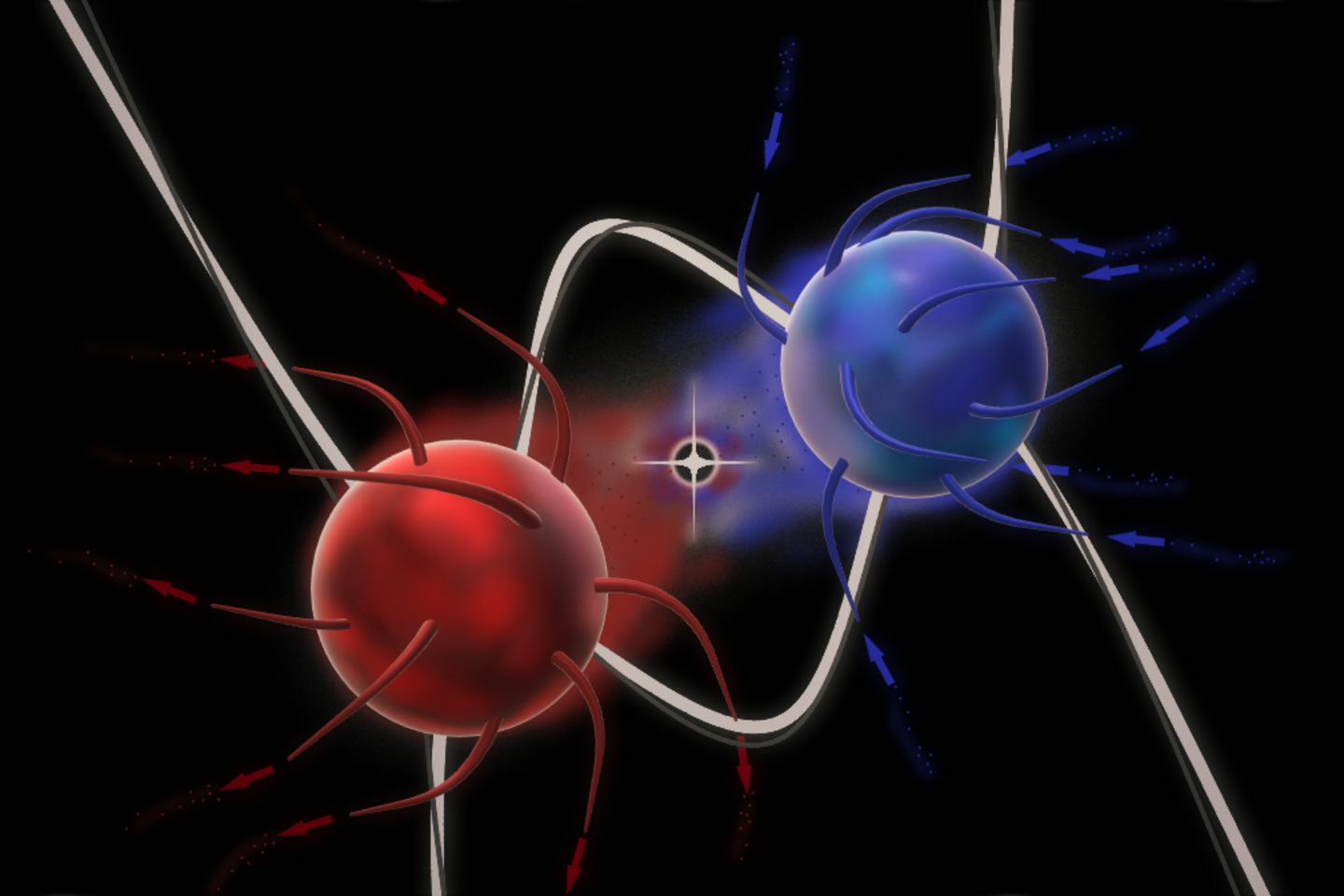Topological states are an integral part of materials research because they are exceedingly stable. It is now possible to toggle such states on and off for the first time.

The mutual annihilation of two topological quasiparticles. Image Credit: © Raphael Bühler.
In math, two shapes are said to be topologically distinct, which means that they cannot be transformed into each other by slight, continuous deformations. As a result, the distinction between them is resistant to perturbations.
Such topological features are just as essential in material science, although in a more abstract manner. A material property that may be explained topologically is also resistant to disturbances: A change in environmental conditions does not cause it to vanish.
However, a research team has now succeeded in specifically switching such topological properties. Some material states are stable against disturbances in a large range of parameters, but they can be turned off in a specific magnetic field. For the first time, topological material properties can now be altered.
Geometry in Abstract Spaces
In physics, a material’s “topological properties” have nothing to do with its geometric shape. Instead, “topological properties” relate to the intricate interplay of the material’s many electrons.
Mathematically, there are several distinct ways to model this relationship. Instead of focusing on the electrons’ precise location, it can be helpful to consider their momentum or, put another way, their location in a hypothetical “momentum space.” In such mathematical spaces, certain material features can be separated from one another by topological criteria.
Finding such topological properties is an exciting thing in itself; in 2016, the Nobel Prize in Physics was awarded for the discoveries of such states. But we have now been able to show something completely new: we have succeeded for the first time in manipulating and even switching off such topological states.
Silke Bühler-Paschen, Professor, Institute of Solid State Physics, Vienna University of Technology
Extreme Topological Effects on Slow-Charge Carriers
For this reason, a unique substance composed of cerium, bismuth, and palladium was used. Bühler-Paschen’s team had already achieved numerous findings utilizing this substance. They were able to demonstrate strange topological behavior in this material, for instance, by accurately measuring its electrical and thermal properties.
This behavior is triggered by the fact that the electric charge in this substance flows in an unusual manner. Individual electrons traveling across an electrically conductive substance carry current. It is, nevertheless, different in this unique material.
The interaction of many charge carriers produces very special “quasiparticles” — a collective excitation of the charge carriers that can perpetuate through the material in the same way that sound can propagate through the air as a density wave without individual air particles moving from the sound source to the sound receiver.
In this substance, these excitations move very slowly. In certain cases, they do not get along very well. As a result, in this case, the topological features of the material in momentum space have particularly strong implications.
Switching Off Topological Properties
Bühler-Paschen states, “Our measurements show that these electrical and thermal properties are indeed robust, as one would expect from topological material properties.”
Small impurities or external disturbances do not cause a dramatic change.
But surprisingly, we found out: with an external magnetic field, you can control these topological properties. You can even make them disappear completely at a certain point. So we have stable, robust properties that you can selectively turn on and off.
Silke Bühler-Paschen, Professor, Institute of Solid State Physics, Vienna University of Technology
This control is made possible by the internal structure of the excitations, which are responsible for charge transport: They hold not only an electric charge but also a magnetic moment, allowing them to be switched through a magnetic field.
If you apply an ever stronger external magnetic field, you can imagine these charge carriers to be pushed closer and closer together until they meet and annihilate each other—similar to a matter particle and an antimatter particle if you let them collide.
Silke Bühler-Paschen, Professor, Institute of Solid State Physics, Vienna University of Technology
Worldwide Search for Exciting Applications
The experiments were carried out at TU Wien (Vienna); however, the group was also able to access high-field laboratories in Nijmegen (Netherlands) and at Los Alamos National Laboratory (USA). Rice University provided theoretical support (USA).
Silke Bühler-Paschen is convinced that “This newly discovered controllability makes the topological materials that have already attracted so much attention in physics even more interesting.”
The switchable topological states could be used in sensor or switching technology. The excitations are very interesting due to the excitations in the material being so slow and therefore having very low energy: the excitations couple to radiation in the microwave range, which is especially important for several technical applications.
Quantum computers and other brand-new, more unusual applications of electronics are also feasible.
Journal Reference:
Dzsaber, S., et al. (2022) Control of electronic topology in a strongly correlated electron system. Nature Communications. doi.org/10.1038/s41467-022-33369-8